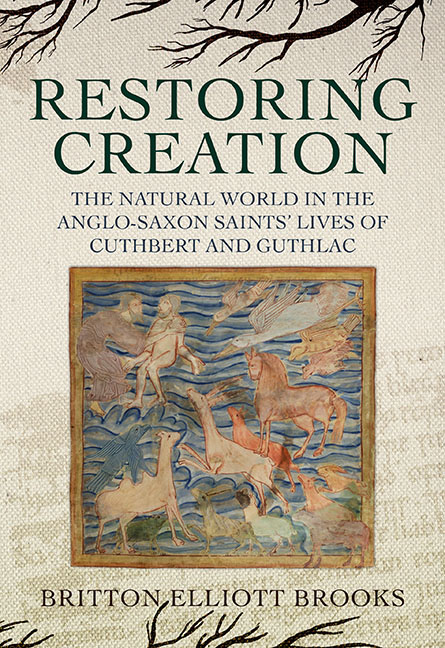 Restoring Creation: The Natural World in the Anglo-Saxon Saints' Lives of Cuthbert and Guthlac
Restoring Creation: The Natural World in the Anglo-Saxon Saints' Lives of Cuthbert and Guthlac Published online by Cambridge University Press: 18 September 2019
Bede's metrical Vita Sancti Cuthberti (VCM) occupies a unique place in hagiography. Chronologically it is the second life of Saint Cuthbert and, if the extant manuscripts are any indication, it was widely influential, especially in the mid-tenth century. It is also the only extant verse saint's life composed by Bede. Scholars have discussed its relation to Latin metrics, its place in the opus geminatum tradition in England, and its relation to the development of Bede's ideas concerning Cuthbert as they relate to his later VCP. The VCM has, however, received remarkably little critical attention as a text in its own right. Bede's VCM, I will argue here, anticipates his reshaping of Cuthbert in the VCP into an idealised Gregorian monk-pastor, by emphasising Cuthbert's monastic obedience in observing the Divine Office. Further still, the VCM, in form and content, was not only a ruminative and poetic exercise for Bede himself, but also was designed as a text for a monastic audience as an aid for rumination and meditation.
The VCM was likely composed during the reign of Osred, between 705 and 716. On the basis of Bede's positive descriptions of the king in lines 552–55, such as the reference to him as ‘venerabile’, and as a new Josiah in lines 554–55, Michael Lapidge posits a date of composition during the early period of Osred's reign, between 705 and 707. These positive references to Osred are in direct contrast to the portrayal of the later part of his reign, during which he becomes, in Lapidge's phrase, ‘a wicked Ahab, defiling nuns and murdering noblemen’. Lapidge has also identified two distinct recensions of the poem. The first recension, which Lapidge categorises as the B-recension after the single manuscript witness, Besançon, Bibliothèque municipale 186, represents an early draft of the poem by Bede, potentially close to the initial version produced between 705 and 707. The second recension, comprising nearly twenty manuscripts, which Lapidge terms the vulgate version, represents a revised text produced by Bede in connection with his subsequent composition of the VCP, sometime after 721.
To save this book to your Kindle, first ensure [email protected] is added to your Approved Personal Document E-mail List under your Personal Document Settings on the Manage Your Content and Devices page of your Amazon account. Then enter the ‘name’ part of your Kindle email address below. Find out more about saving to your Kindle.
Note you can select to save to either the @free.kindle.com or @kindle.com variations. ‘@free.kindle.com’ emails are free but can only be saved to your device when it is connected to wi-fi. ‘@kindle.com’ emails can be delivered even when you are not connected to wi-fi, but note that service fees apply.
Find out more about the Kindle Personal Document Service.
To save content items to your account, please confirm that you agree to abide by our usage policies. If this is the first time you use this feature, you will be asked to authorise Cambridge Core to connect with your account. Find out more about saving content to Dropbox.
To save content items to your account, please confirm that you agree to abide by our usage policies. If this is the first time you use this feature, you will be asked to authorise Cambridge Core to connect with your account. Find out more about saving content to Google Drive.